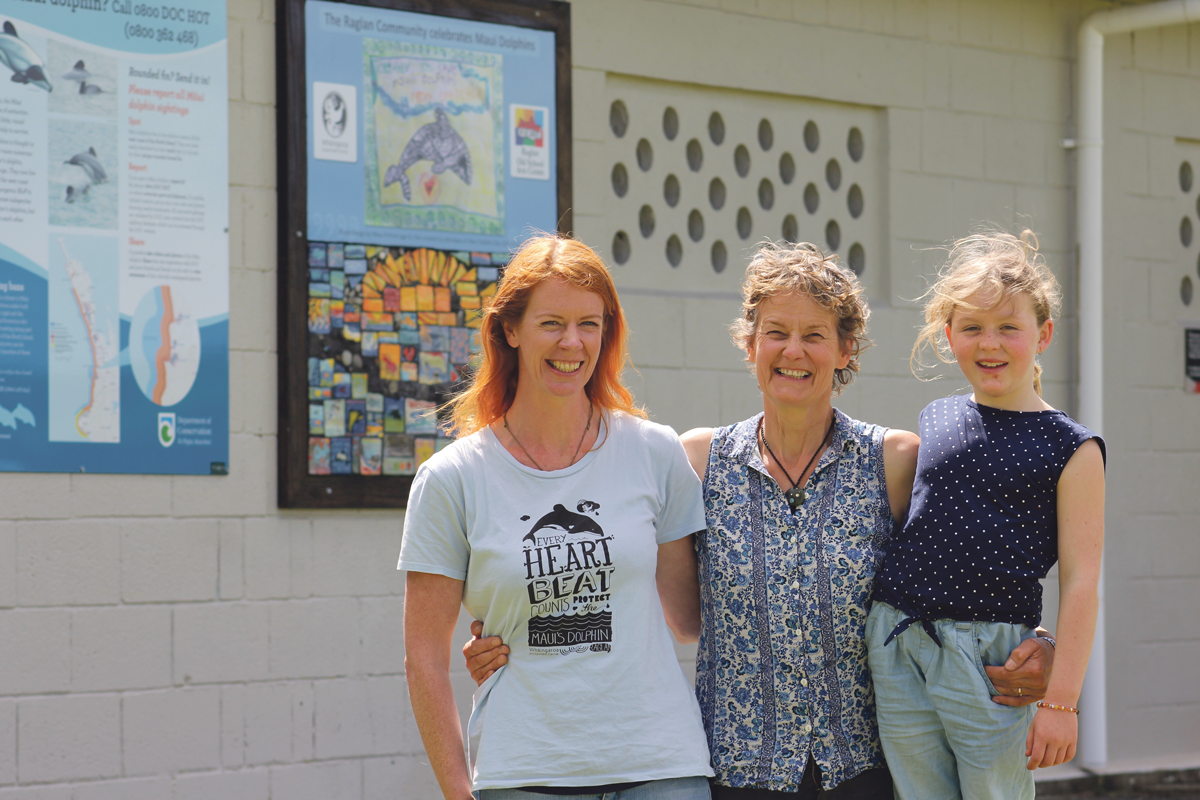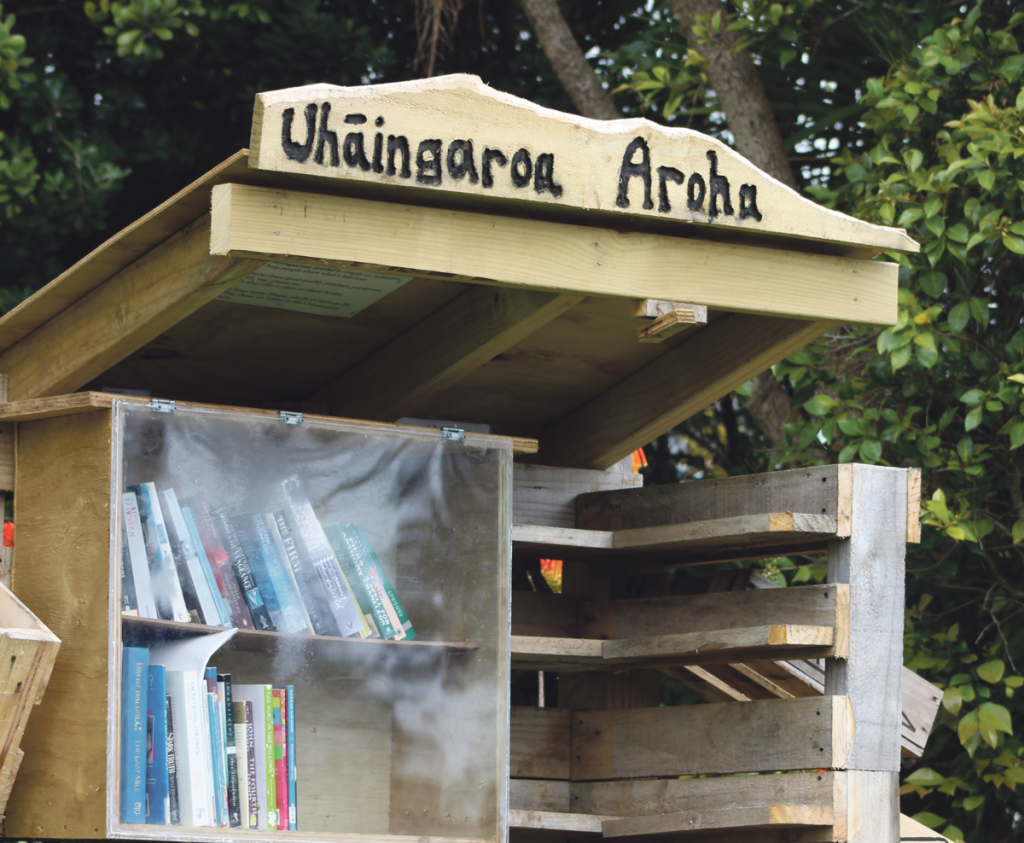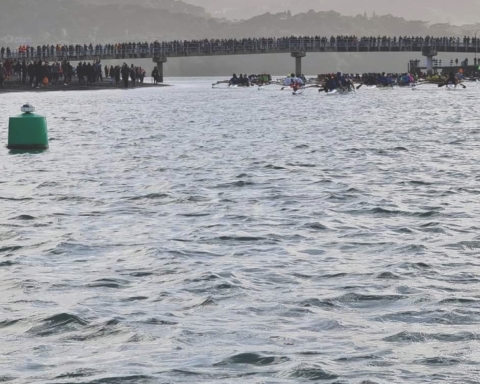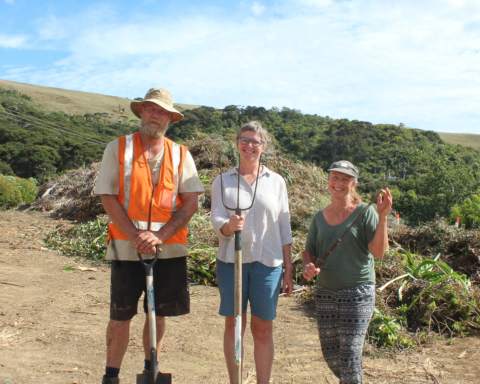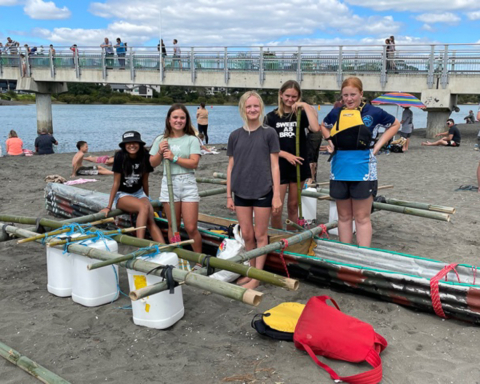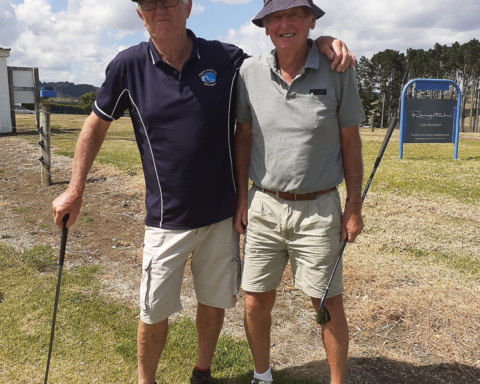A collaboration between Whaingaroa Environment Centre and the Old School Arts Centre three-years in the making has come to fruition with the installation of a Māui dolphin mural on the Te Kopua Reserve changing sheds recently.
The idea for an artwork in Raglan highlighting the plight of New Zealand’s most endangered dolphins was hatched three years ago when WEC approached the Old School about creating a Māui dolphin statue.
Old School Arts Centre clay shed manager Susanne Prinz says they soon worked out that a statue wasn’t in the budget but a clay tile artwork was something they could afford.
“We had just got our kiln which we fundraised for and we thought let’s do something with tiles.”
The tiles were painted in 2015 and 2016 on Māui Dolphin Day and the tile mural was recently mounted on the changing room walls along with the WEC Māui dolphin poster competition winner’s artwork.
Now aged eight, competition winner Nikau Pinfold was six when she designed the poster and is still a big fan of dolphins.
“They are the smallest dolphin in the world,” she says.
“There’s only 63 left, that was at the last count.”
She also did cartwheels through a World Wide Fund challenge to raise over $700 for an endangered species of her choice.
“At the time I was doing 55 cartwheels because that’s how many Māui dolphins there were.”
Susanne says the mural sits nicely beside the Department of Conservation Māui dolphin information which has also recently been installed.
“It’s public art and it highlights the importance of the environment as well as bringing community-focused organisations to work together on a project.”
WEC coordinator Stacey Hill says Whaingaroa catchment flows into the west coast waters which are home to the Popoto or Māui dolphin, the smallest and rarest dolphin in the world.
“Our community has a special affinity for this endemic and critically endangered dolphin,” she says.
“Māui dolphins live close to our shores and have a long and special relationship with tangata whenua. And despite their decline, they are still swimming in our coastal waters.”
“They are part of our community and we all need to look after each other.”
Janine Jackson
